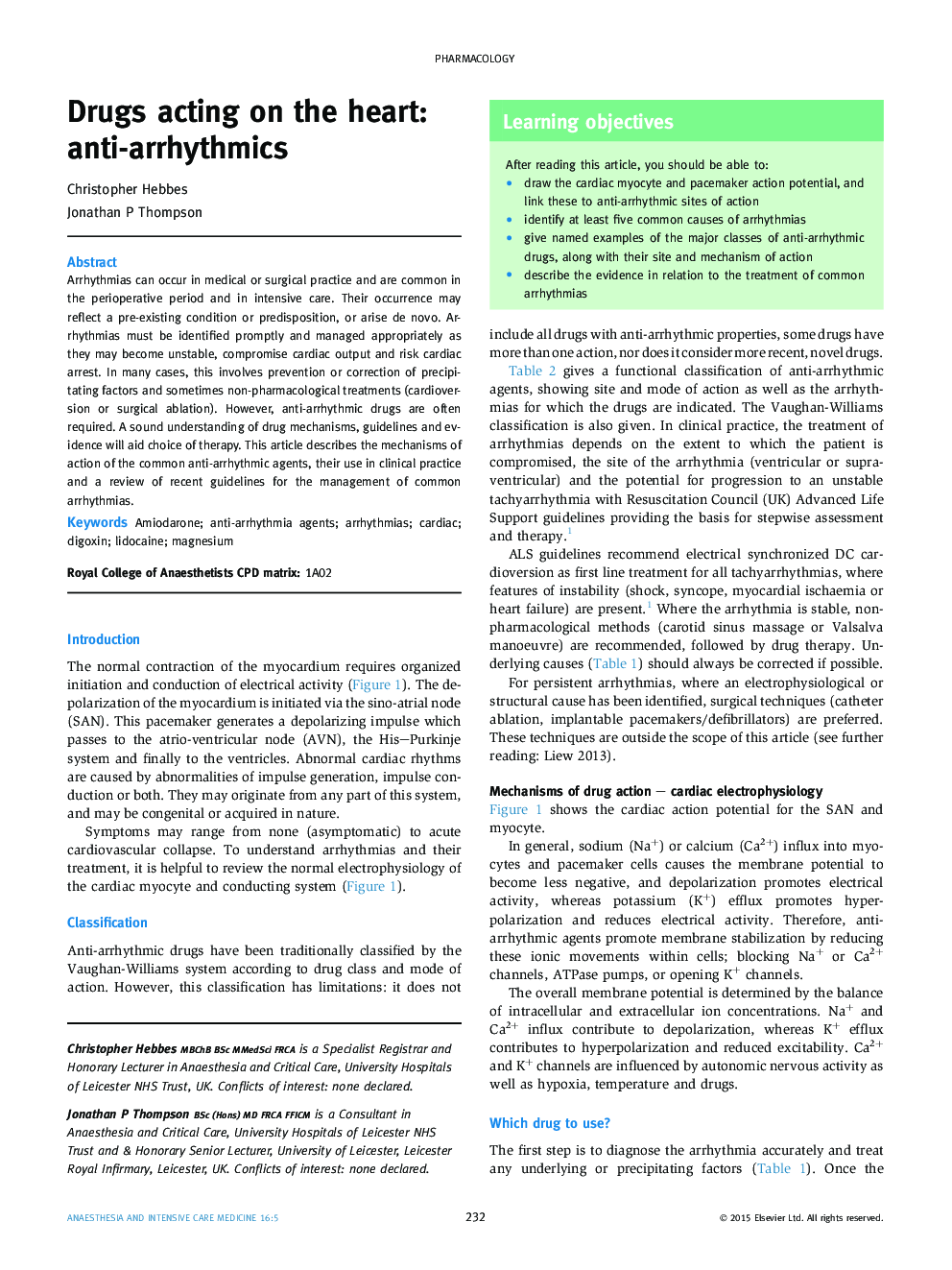| Article ID | Journal | Published Year | Pages | File Type |
|---|---|---|---|---|
| 2742141 | Anaesthesia & Intensive Care Medicine | 2015 | 5 Pages |
Arrhythmias can occur in medical or surgical practice and are common in the perioperative period and in intensive care. Their occurrence may reflect a pre-existing condition or predisposition, or arise de novo. Arrhythmias must be identified promptly and managed appropriately as they may become unstable, compromise cardiac output and risk cardiac arrest. In many cases, this involves prevention or correction of precipitating factors and sometimes non-pharmacological treatments (cardioversion or surgical ablation). However, anti-arrhythmic drugs are often required. A sound understanding of drug mechanisms, guidelines and evidence will aid choice of therapy. This article describes the mechanisms of action of the common anti-arrhythmic agents, their use in clinical practice and a review of recent guidelines for the management of common arrhythmias.
